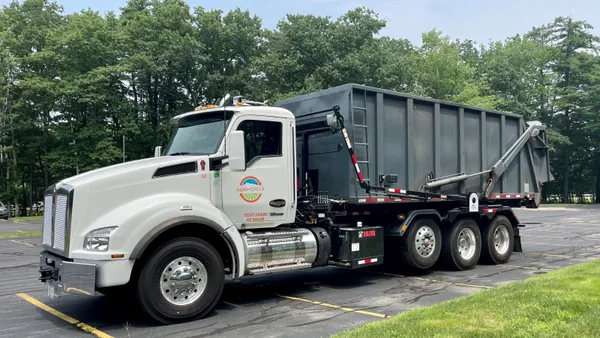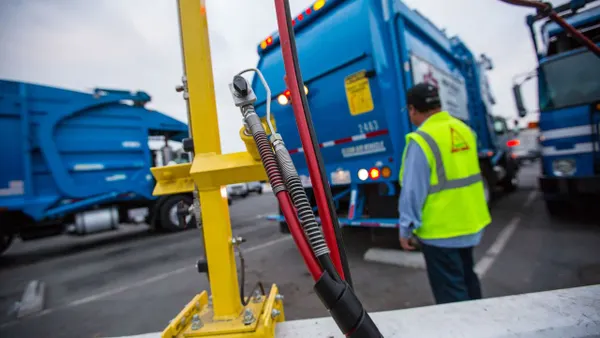Dive Brief:
- More than 160 permitted compost facilities and more than a dozen anaerobic digesters accept approximately 6 million tons of organics per year, according to a California Department of Resources Recycling and Recovery (CalRecycle) survey to assess capacity needs for upcoming regulations under SB 1383.
- The agency's survey also found an additional 4 million tons of permitted capacity available. However, even with this additional capacity, California's annual organics processing capacity will need to expand to a total of 12-14 million tons.
- The main barriers to expanding capacity are a lack of guaranteed processing contracts, feedstock contamination, regulatory restrictions and community concerns with siting and odors. Jurisdictions will need to commit resources to robust organics collections programs before operators will commit to new facilities or expansion.
Dive Insight:
As required by SB 1383, CalRecycle and Integrated Waste Management Consulting conducted this market analysis report to analyze progress from the private and sector and local governments. The survey involved 59 facilities, which collectively process approximately 90% of the state's annual organics tonnage, to better understand current operations and barriers to expansion.
The majority of the current capacity was found to mainly be in southern California. Feedstock access could be limited based on factors affecting individual regions, including hauling distances, franchise fees and even imported pest quarantine zones.
The primary barriers to expansion are regulatory requirements and a lack of guaranteed feedstock. Operators are wary of making improvements or adding infrastructure that could entail new air district, solid waste, or land use permits – as well as lengthy environmental review processes. In addition, expansion or construction of facilities can face community pushback due to associated traffic and odors concerns. These regulatory, feedstock and siting concerns drive up the costs of expansion, which in turn can make facility operators reluctant to commit additional resources without first securing feedstock contracts.
"Facilities will expand if entities collect the material, not the other way around," states the report. It cites effective organics collection programs as key to driving processing facility expansion, including the development of robust pre-processing and post-processing steps that can reduce feedstock contamination from glass and plastic.
As local governments prepare for regulations they're looking at ways to both enhance both organics collection and processing infrastructure. In the case of Los Angeles, this has included implementing co-digestion at existing wastewater facilities, improving feedstock supply by piloting the use of in-sink disposal and exploring curbside configurations to optimize residential organics collection.
While all of this can be initially challenging, the state's survey says that there is a healthy market for end-products. Demand for compost is seen as strong in the agricultural sector and growing opportunities to monetize biogas are helpful for anaerobic digestion projects.
Based on this data, as well as previously published analyses, CalRecycle is planning on unveiling draft rules to meet SB 1383 goals later this month. Enforcement of these rules will commence in 2022 with environmental reviews, multiple workshops, and technical support activities planned ahead of time.
Former Gov. Jerry Brown signed SB 1383 into law in 2016, codifying the California Air Resources Board’s Short-Lived Climate Pollutant Strategy. The law sets a target of diverting 50% of organic waste by 2020 and 75% by 2025, compared to 2014 baseline levels. SB 1383 also includes a target to increase edible food recovery by 20%, but that element was not addressed in this research.









